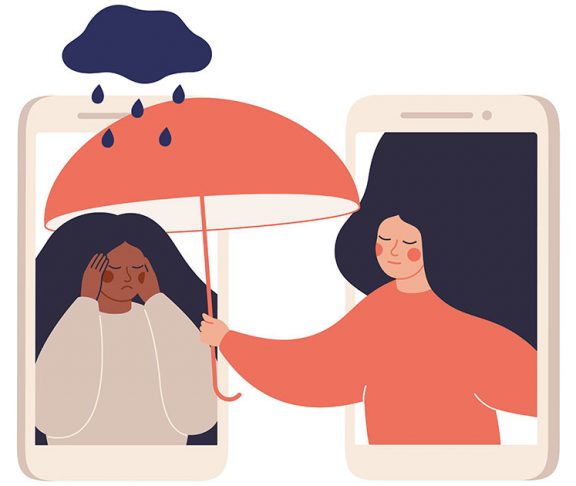Mental health programs in the workplace improve employee satisfaction and productivity — but the key element is inclusion.
As the workplace expands beyond the office into people’s homes and other non-traditional spaces, mental health programming has never been more important. A recent study found that 83 percent of employees had a more positive work experience as the result of an employer-provided well-being program, and 84 percent said these programs made them feel more positive towards their employer.
“Including mental health programs as part of workplace programs and practices promotes self-care, coping skills, and overall employee wellbeing and wellness,” notes Dr. Rachel O’Neill, vice president of clinical network and quality at Talkspace, a leading provider of online and mobile therapy. “It also helps support a psychologically healthy workplace, which may result in increased employee satisfaction and productivity. Employees who have access to mental health programs are more likely to feel supported and valued by their employer.”
Inclusivity
One mistake many companies make is providing a “one-size-fits-all” solution for well-being and mental health programming. “Inclusivity is a core component of psychological safety — that is, the feeling of comfort and security among managers and coworkers — in the workplace,” O’Neill explains. “Mental health and well-being programs should consider the unique needs of employees when constructing workplace programs to support mental health.” Talkspace, for example, offers online therapy — for adults, teens, and couples — psychiatric support, and lasting relationship counseling tools, among other services, to give clients a wide range of options to support their mental health journey.
This means identifying programs that highlight issues of equity and inclusion, as well as those that focus on timely issues that may be impacting employees. To ensure that a mental health offering will be useful to employees, O’Neill recommends the direct approach. “It may be helpful to directly poll employees to determine the types of mental health and wellness programs that they believe would be most beneficial,” she suggests. “For example, some companies may be navigating hybrid workplaces, and could benefit from learning strategies to help balance working from home and working in the office. Conversely, a workplace that employs a large number of parents and primary caregivers could benefit from sharing strategies to help balance work/life demands.”
Choice is a powerful component of a successful mental health offering as well. “Consider programming that can help employees access a continuum of services,” O’Neill says. “Workplace webinars and workshops are a great way to begin to introduce conversations related to self-care and coping skills, while core solutions like online therapy can offer ongoing support.”
Behavioral health benefits for employees
The shift to remote work due to the global pandemic had a powerfully negative impact on mental health. Research has shown that daily interactions with other people are crucial to our sense of happiness and well-being — and isolation can have a devastatingly negative impact on our mental and physical health. The shift towards hybrid and remote work has accelerated the rise of telehealth in general — and mental health services in particular. Accessing healthcare via mobile devices, online, and using virtual tools has become the new normal for many, and mental health is no exception.
The key is finding the right partner to help develop a mental health program that offers employees a range of services that can be accessed no matter their location, background, gender, or age. Talkspace offers employers a benefits solution for mental health that provides virtual direct care services from a national network of fully-credentialed licensed therapists and prescribers, representing 100+ areas of expertise. “All care is delivered through our private and secure digital platform, which also includes education and self-serve tools,” notes O’Neill. “With Talkspace, members can send their therapist private text messages anytime, or attend a live session with their psychiatric prescriber from anywhere.”
For O’Neill, the bottom line when planning a mental health program is simple. “The best approach to mental wellness is one that employees use,” she says simply.
To learn how Talkspace can provide mental health solutions for your business, visit business.talkspace.com.


